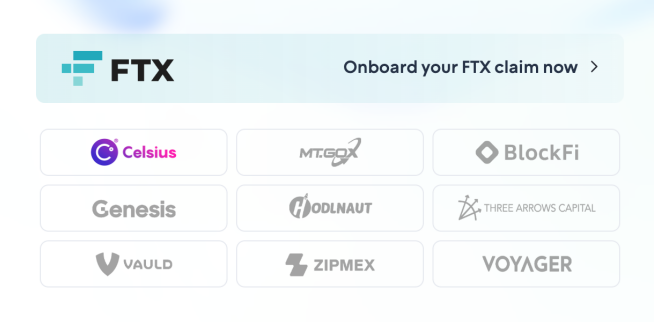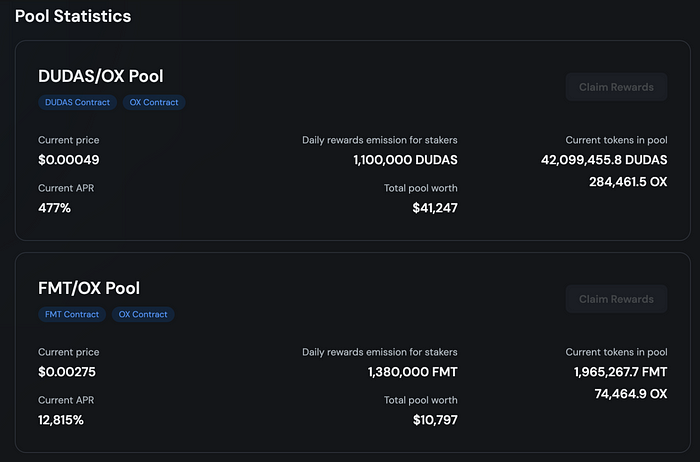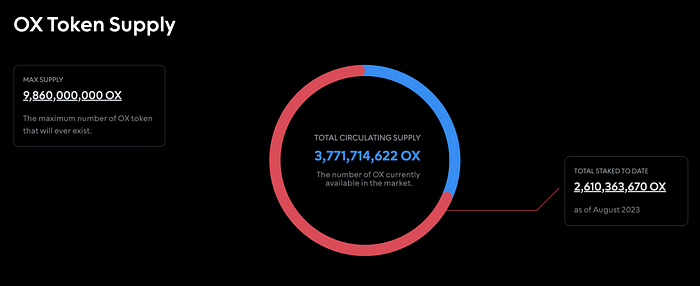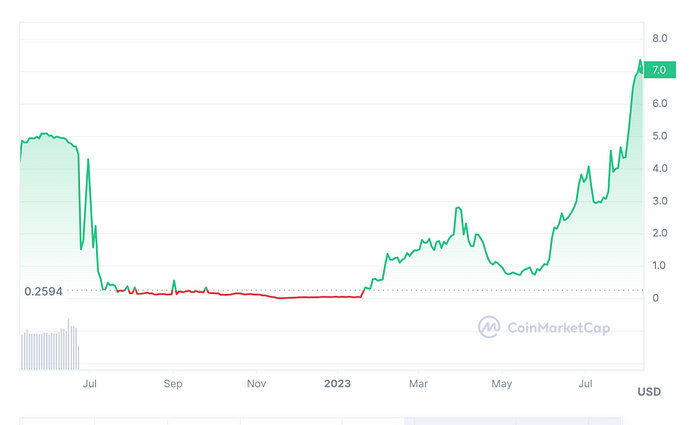The Past and Present of OPNX – From Bankruptcy Alliance to Hundredfold Increase
OPNX From Bankruptcy Alliance to Hundredfold IncreaseOPNX, formerly known as GTX, is an exchange for debt rights, spot trading, and futures derivatives. It was launched in collaboration with Su Zhu and Kyle Davies from Three Arrows Capital and Mark Lamb, co-founder of CoinFLEX. The exchange aims to simplify the claims process and build a public market for claims transactions, unlocking trapped capital. OPNX tokenizes the bankruptcy claims ledger for trading on an order matching platform, while allowing bankruptcy claims to be used as collateral for contract transactions.
1. Development Timeline
In June 2022, the cryptocurrency derivatives exchange CoinFLEX experienced a liquidity crisis and announced a suspension of withdrawals.
In July 2022, CoinFLEX proposed a compensation plan for users, including the distribution of rvUSD (Recovery Value USD) representing the value of the debt, compensation in CoinFLEX shares and locked FLEX tokens, and further allocation of existing funds. The current displayed price of rvUSD on OPNX is $0.15, and there has been no trading volume since August.
In August 2022, CoinFLEX applied for restructuring in the Seychelles court. The restructuring plan was approved with a support rate of nearly 99%. Creditors will hold 65% of the company’s shares, the CoinFLEX team will be allocated 15% of the shares, and B-round investors will continue to be shareholders of the restructured company.
- Exploring the Future of Web3 Social (Part 1) From 0 to 1 – Achieving Cold Start of Applications with Social Graphs.
- Enterprise Blueprint BC Technology Group (0863) approved to provide digital currency trading services to retail investors.
- Interpreting the Current Situation of Velodrome V2 Upgrade Record High Revenue, but Token Value Doesn’t Match the Increase in Issuance
On January 16, 2023, The Block reported that Su Zhu and Kyle Davies, in collaboration with CoinFLEX, plan to raise $25 million for a new cryptocurrency exchange called GTX.
On March 7, 2023, @DefiIgnas tweeted that GTX had completed a $25 million financing round, which was also confirmed by Su Zhu’s retweet. In the same tweet, @DefiIgnas stated that OPNX would acquire all of CoinFLEX’s assets, including personnel, technology, and tokens; FLEX would be their main token; and there could be brand accumulation from AAVE/LEND.
On March 9, 2023, GTX was renamed Open Exchange (OPNX).
On April 4, 2023, Open Exchange (OPNX) announced its official launch, supporting cryptocurrency spot and derivative trading. On the first day of trading, there were only two transactions with a total trading volume of only $1.26.
On April 8, 2023, Open Exchange (OPNX) announced the launch of the Market Maker Program to provide liquidity for market makers. There are two main incentive methods:
The first method is that up to 200 VIP market makers can receive $5,000 per month,

The second method is to provide incentives ranging from $50,000 to $500,000 per month based on trading volume.

On April 21, 2023, OPNX tweeted that its investors include AppWorks, Susquehanna (SIG), DRW, MIAX Group, China Merchants Bank (Hong Kong Branch), Token Bay Capital, Nascent, Tuwaiq Limited, and others. However, the next day, DRW, Nascent, MIAX, and Susquehanna (SIG) all denied investing in OPNX. AppWorks officially tweeted that they opposed investing in OPNX and instead transferred their equity as investors in CoinFLEX to OPNX. It is reasonable to speculate that these investors are all investors in CoinFLEX, and after the restructuring, their equity in LianGuaiSS was transferred to OPNX, misleadingly described as strategic investors in the new project.
Open Exchange (OPNX) announced on May 2, 2023 that it will collaborate with Heimdall to launch a virtual trading market for fictitious transactions. Heimdall advocates for the verification, transfer, and tokenization of real-world assets managed by OPNX users. After verification, all charges will be increased and stored in a Special Purpose Vehicle (SPV) dedicated to each platform. Tokens will be issued against the SPV and recorded in the accounts of the chargers. The charged tokens reflect the proportional contribution in the trust.
Open Exchange (OPNX) launched governance token OX and its corresponding governance platform, The Herd, on June 1, 2023. OX has five options for staking periods: 2 weeks, 1 month, 3 months, 6 months, and 1 year. Similar to Curve, the longer the staking period, the more voteOX one can receive, corresponding to a larger staking right.
OPNX announced the launch of the debt trading function on June 4, 2023.

According to the operation instructions of OPNX, debt tokenization for trading requires three steps:
1. Create an OPNX account and complete KYC.
2. Provide detailed debt information and submit a debt transfer application.
3. Sign the debt transfer agreement.
After completing the above steps, you can trade debt tokens on OPNX.

The platform currently has bond trading for Celsius and FTX, but there is little trading volume.
OPNX launched Justice Token on June 12, 2023. Justice Token is a series of tokens issued based on certain risk events. Each token has a total supply of 1 billion, with 75% of the total supply allocated to OX stakers within 6 months, 20% to liquidity providers of JT-OX, and 5% to the Milady community. The whitepaper explicitly states that Justice Token is a meme token with no intrinsic value, no underlying value support, and no expected return. Two Justice Tokens, DUDAS and FTM, are listed. The annualized returns for OX stakers are 8.9% and 13.2% respectively, with total liquidity pools of $40,000 and $10,000 for the two tokens.


OPNX announced on June 24, 2023 the launch of oUSD, a credit currency that can be exchanged 1:1 with USDT. oUSD can be used to measure all gains and losses in margin futures trading. Traders with profitable trades will have a positive oUSD balance and can convert their oUSD profits into USDT through oUSD/USDT trading. Traders with losses will have a negative oUSD balance (interest payment required), and they can purchase oUSD to offset their negative oUSD balance. When the price of oUSD is higher than $1, users have an incentive to sell oUSD. When the price of oUSD is lower than $1, users with negative oUSD balances have an incentive to buy, allowing them to initiate borrowing positions at a cheaper price and maintain a stable empirical price for oUSD.
On June 25, 2023, OPNX announced the launch of the first LaunchLianGuaid collateral-free loan market, Raiser (RZR). All OX pledgers will share a 10% allocation of RZR supply. As of now, the product series has been launched. RZR was launched on OPNX on July 17, with an initial price of 0.164 USDT. However, there has been no trading volume so far. RZR has about 250,000 liquidity on Uniswap, with a recent daily trading volume of around $10,000.
On July 26, 2023, one month after the first launchpad, OPNX announced its second launchpad project, a new sports metaverse enterprise game plan by UFC champion Khabib Nurmagomedov. The investment is led by 3AC Ventures, and a portion of GPLAN tokens will be distributed to OX pledgers. Users can own tokens of their favorite sports teams and contribute to the decision-making process regarding team management, strategies, and other related aspects through token voting. The game plan currently only has Twitter and Discord, and there is no official website or PDF with other related information.
On August 6, 2023, according to Bloomberg, OPNX proposed injecting $30 million worth of FLEX digital tokens into Hodlnaut, a bankrupt Singaporean crypto gateway.
II. Token Economy
1. Total Supply

OPNX’s platform token $OX total supply = ($FLEX total supply – $FLEX burned) * 100
9.86 billion = (100 million – ~1.4 million) * 100.
Currently, the OX pledging rate is about 70%.
2. Token Utility
(1) Transaction Fee Rebates
OX allows users to trade for free through pledging. If the total amount of OX held by a trader equals or exceeds their OPNX trading volume, they can receive a 100% transaction fee rebate. Pledgers who exceed the free trading limit will receive a 50% transaction fee rebate on the remaining amount. All transaction fee rebates will be paid in OX to token holders.
(2) Transaction Fee Discounts
Non-pledged OX users can also receive up to a 50% transaction fee discount.
(3) Pledging to receive OPNX LaunchLianGuaid & Justice Tokens airdrop rewards
(4) Used as collateral for futures trading

(4) Significant reduction in RWA tokenization costs.
3. $FLEX-$OX Conversion
$FLEX can choose to convert to $OX at a ratio of 1:100. If the conversion is done with a lock-up period of three months, a 25% bonus will be received. The discounted exchange ratio of 1:125 will be available until August 28, 2023. Currently, about 35% of $FLEX has been converted to $OX.
In theory, the price of FLEX:OX should be 100:1. Due to the one-way conversion mechanism, the price of FLEX cannot be lower than that of OX. When the price of FLEX is lower than this ratio, users tend to convert it into OX to bring the price of FLEX back to this ratio. When the price of FLEX reaches this ratio, users will not choose to convert, but arbitrage cannot be completed because OX cannot be converted back to FLEX.

3. Price Performance

In June 2022, after CoinFLEX announced the suspension of withdrawals, Flex plummeted;
In January 2023, after the news of GTX financing came out, Flex revived and the price entered an upward channel, reaching a high of $2.8;
In early April 2023, Open Exchange (OPNX) was officially launched, with dismal business data. On the first day of its launch, there were only two transactions, and Flex plummeted after being listed on OPNX, with a minimum drop of over 70% in the later period;
On June 1, 2023, OX was launched, and FLEX smoothly entered the upward channel again. On June 5, there were significant increases, with two launchLianGuaid news bringing about 33% and 14% increases respectively. The price has multiplied since the beginning of the year.
In terms of total market value, OPNX is close to $700 million, surpassing Bitget’s $640 million, Gate’s $560 million, Kucoin’s $540 million, and Huobi’s $410 million.

In terms of business data, OPNX’s daily trading volume has rapidly exceeded $100 million since its initial launch, with instant trading volume occurring in contract trading. The spot trading volume data only shows a few thousand dollars, obviously lower than Bitget, Gate, Kucoin, and Huobi. At the same time, OPNX’s trading data has inconsistent volume-price fluctuations, and the authenticity of the data has been questioned.


4. Concurrent Debt Trading
The other two major players in the cryptocurrency debt trading market are Xclaim and Claims-Market.
Xclaim was founded in 2018, aiming to provide transparent pricing and fast execution for crypto claimants. Founder and CEO Matthew Sedigh has 15 years of experience in the corporate restructuring industry. Currently, Xclaim offers debt trading from 5 bankrupt platforms: Genesis, FTX, BlockFi, Celsius, and Voyager, with discounts ranging from 20% to 40%. The number of transactions is 1070, with a total amount of approximately $356 million. The trading mode is mainly case by case.

Claims-Market is a claims product launched by investment bank Cherokee Acquisition, targeting not only cryptocurrency users but also all debt trading users. The general process of the transaction is that the seller signs the “Seller Agreement” and the “Simple Assignment of Claim” (SAC) and lists the options for the claims held; the buyer signs the acknowledgment agreement and makes an appropriate offer or bid; after the transaction is reached, the seller signs the “Simple Assignment of Claim” and sends all evidence to the buyer to confirm the invoice. Claims-Market also formulated the “Simple LianGuai ThroughAssignment” (SPTA) to facilitate secondary trading of charts. According to data from the platform, creditors have sold $190 million in claims through 294 transactions.

OPNX attempts to create a highly liquid standardized order book market and collateralized debt functionality in its product, which was not available before.
5. Summary
From a product concept perspective, OPNX is the most comprehensive in debt trading, but in terms of actual operation, the trading volume of tokenized debt is extremely low, and the launch of FTX debt did not indirectly bring a turning point. The development of OPNX’s debt trading, which it focuses on, is in a dilemma and needs to be overcome. At the same time, OPNX has continuously launched various empowering and positive news, but the quality of the launchLianGuaid project has been criticized. In terms of valuation, OX has a premium compared to other exchange platform tokens.
We will continue to update Blocking; if you have any questions or suggestions, please contact us!
Was this article helpful?
93 out of 132 found this helpful
Related articles
- Research Report Arbitrum
- Who is behind Binance A Borderless Company in 4000 Resumes
- Coinbase has been approved to provide cryptocurrency futures services to retail traders in the United States.
- Coinbase CEO Canadians Are Moving Away from Cryptocurrency Speculation Trading
- In-depth study of the efficient cross-chain exchange protocol Chainflip
- CFTC Chairman 70% of cryptocurrency products should be classified as commodities
- Vitalik Buterin Social media experiment Community Notes embodies the spirit of encryption.





